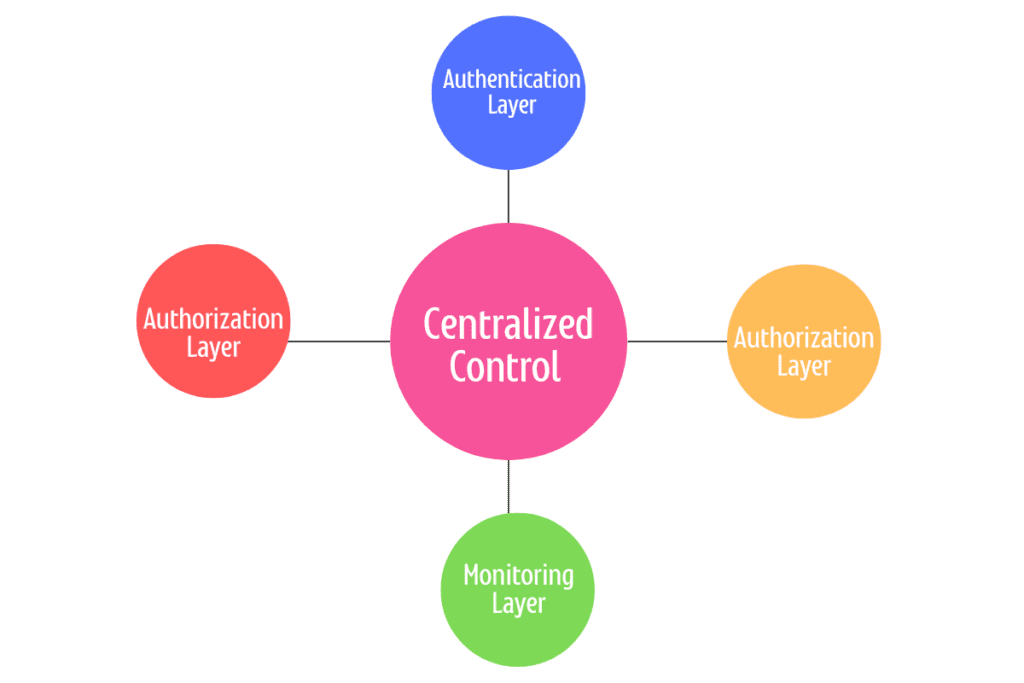What Is Zero Trust Security? and Why Does Your Business Need It?
What if the traditional way of securing your business trusting employees and devices inside your network could be putting you at greater risk? As cyber threats grow more sophisticated, relying on outdated security measures is no longer enough to protect your sensitive data. This is where Zero Trust Security steps in. The Zero Trust Security model challenges the old-school assumption that everything inside your network is safe. Instead, it operates on a simple yet powerful principle: trust no one, verify everything.
With cybercrime on track to cost businesses over $8 trillion by 2024, the stakes have never been higher. In fact, 82% of breaches are caused by compromised credentials, and as more businesses shift to the cloud, the risks continue to grow.
The cloud now hosts 93% of enterprise data, making it a prime target for hackers. Without adopting a Zero Trust approach, your company could be leaving the door wide open to potential breaches. Zero Trust ensures that only those who are fully authenticated and authorized can access your critical systems helping to safeguard your business.
What is Zero Trust Security?
Zero Trust Security is a modern approach to cybersecurity that assumes no one, whether inside or outside your network, is trustworthy by default. Unlike traditional security models, which trust devices and users once they’re inside the network, Zero Trust operates on the principle of “never trust, always verify.”
In simple terms, Zero Trust means that every request to access your company’s systems or data is thoroughly checked and verified, even if it comes from someone already inside the network. It doesn’t matter if the user is in your office or working remotely; each time they want access, they must prove they are who they say they are.
To make this happen, Zero Trust uses tools like multi-factor authentication (MFA), strict identity checks, and continuous monitoring. It also limits access to only what each user needs to do their job, known as the principle of least privilege. This reduces the chances of an attacker gaining access to sensitive data, even if they manage to break into one part of the system.
What is a Zero Trust Security Model and Framework?
The Zero Trust model is a way of thinking about cybersecurity that says, “Never trust anyone, always verify.” In traditional security models, once someone gains access to the network, they are trusted to move around freely. However, in the Zero Trust framework, trust is never assumed, no one, whether inside or outside the network, is trusted by default. Instead, every user, device, and application must be continually verified before being granted access to any resource.
A Zero Trust framework is the set of policies, technologies, and processes that support this model. It includes strict access controls, such as identity and access management (IAM), multi-factor authentication (MFA), encryption, and continuous monitoring. The goal is to minimize the risk of internal and external threats by ensuring that users can only access what they need to do their job, and nothing more. This minimizes potential damage if an attacker compromises one part of the network.
To Break it Down Simply:
- Verification: Every request for access is authenticated and authorized, no matter where it originates.
- Access Control: Users only have access to the specific resources they need, based on their role.
- Continuous Monitoring: Activities are constantly monitored to detect and respond to threats in real-time.
In Zero Trust in cybersecurity, the focus is on securing every endpoint and ensuring that no device or person is ever automatically trusted. This approach significantly reduces the chances of data breaches and internal threats.

Importance of Zero Trust Security:
| Aspect | Explanation |
| What is Zero Trust? | A security model that assumes no one, inside or outside the network, should be trusted by default. All users and devices must be verified. |
| Minimizes Risk | Reduces the chances of data breaches by continuously verifying users, even those inside the network. |
| Secures Sensitive Data | Zero Trust ensures that only authorized users and devices can access sensitive information, reducing the impact of potential leaks. |
| Limits Lateral Movement | Prevents attackers from moving freely within the network by restricting access to the least privileged areas. |
| Adapts to Modern Work Environments | With the rise of remote work and cloud computing, Zero Trust secures access from diverse locations and devices. |
| Improves Compliance | Helps organizations meet regulatory requirements by providing strict access control and audit trails. |
| Reduces Insider Threats | By continuously monitoring and verifying users, Zero Trust reduces the chances of internal threats. |
| Enhanced Visibility | Offers greater visibility into network traffic and user activities, helping in threat detection and prevention. |
| Minimizes the Impact of Breaches | In case of a breach, Zero Trust ensures that the compromised user or device has limited access, containing potential damage. |
How Zero Security Trust Model Helps Businesses?
The Zero Trust Security Model helps businesses by ensuring that no one, whether inside or outside the company network, can access sensitive information without being verified. Here’s how it helps:
- Stronger Protection Against Threats: It continuously checks and verifies all users and devices, which makes it harder for attackers to get in, even if they have the right credentials. This is especially important as cyber threats keep evolving.
- Limits Damage: If a breach occurs, the Zero Trust Network makes sure that the attacker only gets access to a small part of the system, reducing the potential damage.
- Better Control: Businesses have more control over who accesses what data, which helps protect sensitive customer information and comply with industry regulations.
- Supports Remote Work: As more businesses allow remote work, the Zero Trust Security Model ensures employees can securely access company resources from anywhere, without compromising security.
- Increases Trust with Customers: By using Zero Trust, businesses show customers that they take security seriously, which can help build trust and loyalty.
How Zero Trust Security Works?
| Step | Explanation |
| 1. Verify Identity | Every user and device, regardless of location, must prove their identity before accessing any system or data. |
| 2. Least Privilege Access | Users and devices are only given access to the specific resources they need, limiting exposure and potential threats. |
| 3. Continuous Monitoring | Even after access is granted, users and devices are continuously monitored to detect any unusual behavior or security risks. |
| 4. Micro-Segmentation | The network is divided into smaller, isolated segments to prevent attackers from moving freely across the system if they breach one area. |
| 5. Access Control Policies | Businesses define specific rules for who can access what, based on user roles, location, and other factors, ensuring that access is tightly controlled. |
| 6. Multi-Factor Authentication (MFA) | Requires users to provide multiple forms of verification (e.g., password and fingerprint) before they can access any resources. |
| 7. Encryption | Data is encrypted both in transit and at rest to prevent unauthorized access, ensuring that even if data is intercepted, it remains secure. |
| 8. Real-Time Threat Detection | Security systems constantly monitor for signs of malicious activity and respond quickly to mitigate threats as they arise. |
This table highlights the steps involved in how Zero Trust Security works, emphasizing the importance of continuous verification and access control in protecting business systems.
Conclusion:
With cyber threats becoming more advanced every day, it’s clear that traditional security methods just aren’t enough. What is Zero Trust Security? It’s a modern approach where no one, inside or outside the network, is trusted by default. The Zero Trust Security Model makes sure every user and device is thoroughly checked before they can access anything, helping keep your data safe.
Businesses using Zero Trust in Cyber Security, can reduce risks, limit damage, and better protect sensitive information. In today’s world, Zero Trust is a smart move for any business that wants to stay secure.
FAQS About Zero Trust Security
What is a zero security model?
A Zero Trust Security Model is a framework where no user or device is trusted by default, and every request for access must be authenticated, authorized, and continuously monitored.
Where to get zero security services?
Zero Trust security services can be obtained from cybersecurity companies, cloud providers, or specialized IT security consultants who offer tailored solutions to protect your business.
What are the advantages of zero trust security?
It enhances data protection, reduces the risk of insider and external threats, limits damage from breaches, and ensures compliance with security regulations.
How zero trust security helps against cyber attacks?
By verifying every user and device before granting access and continuously monitoring activity, Zero Trust prevents attackers from gaining full access, even if they breach one part of the network.









